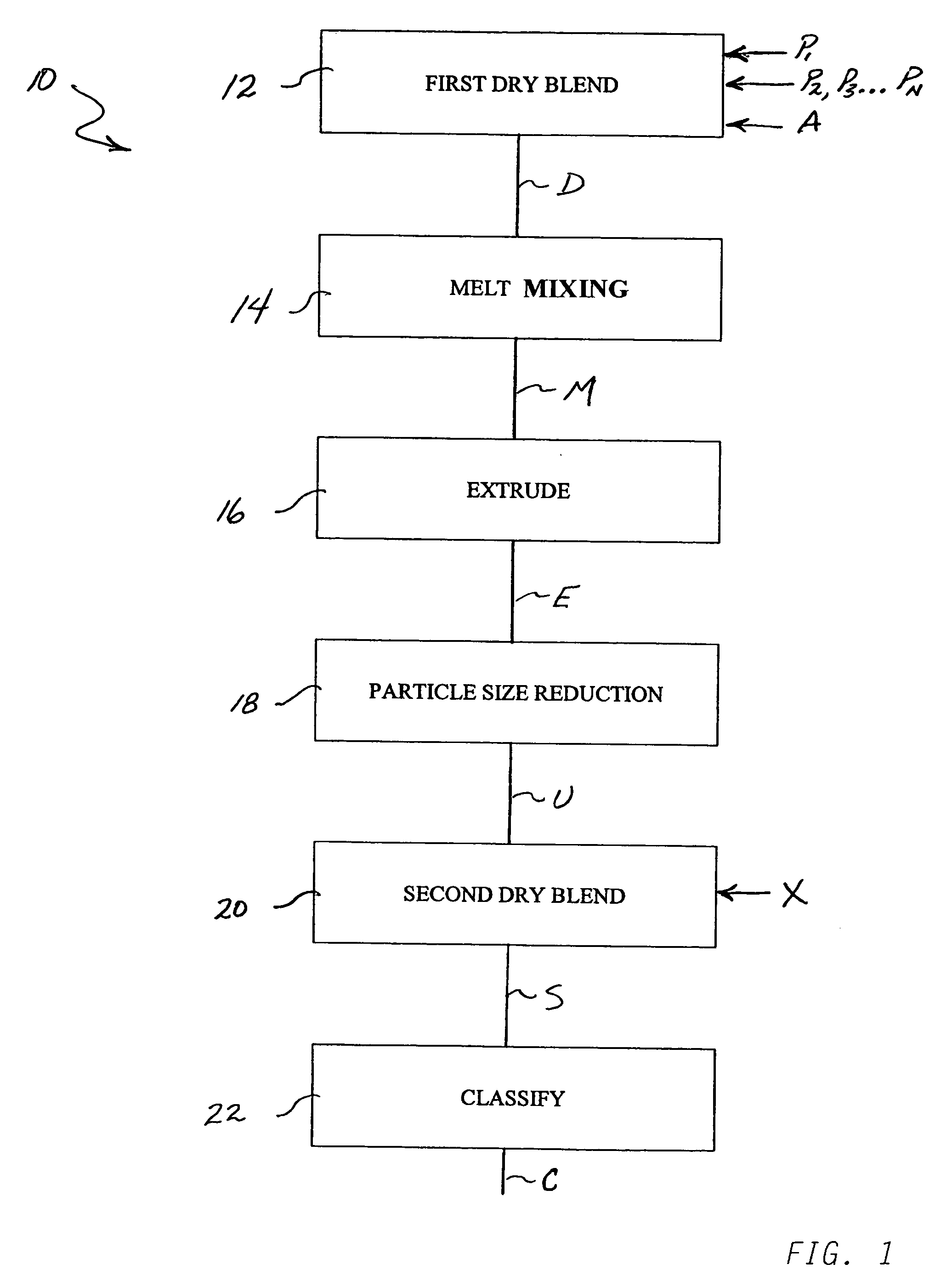Microtoner formulation with enhanced classification properties and method of producing same
a technology of microtoner and classification properties, applied in the field of toner, can solve the problems of particle size distribution, chemical methods that must be closely controlled and monitored, and not as environmentally friendly as mechanical methods, and achieve the effect of classifying more efficiently
- Summary
- Abstract
- Description
- Claims
- Application Information
AI Technical Summary
Benefits of technology
Problems solved by technology
Method used
Image
Examples
example 2
CONVENTIONAL EXAMPLE 2
[0033] A second conventional single-polymer toner extrudate was prepared by melt blending in a 30 mm twin-screw extruder Regal 330 carbon black pigment, obtained from Cabot Corporation, Billerica, Mass. USA, with Binder W-85 polyester, obtained from Kao Corporation of Tokyo, Japan, and with 2 pph Bontron E-84 charge agent such that the final pigment concentration was 6.0 parts of pigment per 100 parts resin by weight. The pigment concentration was chosen for specific calorimetric properties not pertinent to the invention. The toner extrudate was cooled out of the extruder through a chill-belt and granulated in a Wiley-type mill into granules of approximately 500 microns in size.
[0034] The above-described granulated black toner extrudate was then pulverized using a Hosokawa-Alpine 200 AFG jet mill pulverizer at a nozzle pressure of approximately 80 psi with an average rotor speed of approximately 10,500 revolutions per minute, and a bed level indicated by a rot...
##ventive example 1
INVENTIVE EXAMPLE 1
[0038] In contrast to the above examples, the toner formulation produced by the method of the present invention has an increased classification efficiency, i.e., the toner is more efficiently classified to remove fine and super fine particles therefrom. More particularly, the toner formulation of the present invention adds surface treatment addenda X to an unclassified toner mix U by a second dry mixing process to thereby produce an unclassified toner S that, when processed by conventional classification methods and / or processes, produces a classified toner C having a significantly smaller amount of fine and super-fine particles and, thus, an improved particle size distribution.
[0039] More particularly, melt mix M was prepared by melt blending in a 30 mm twin-screw extruder Regal 330 carbon black pigment, obtained from Cabot Corporation, Billerica, Mass., USA, with 2 pph Bontron E-84 charge agent, and with a blend of two polyesters. The polyesters in this exempla...
PUM
 Login to View More
Login to View More Abstract
Description
Claims
Application Information
 Login to View More
Login to View More - R&D
- Intellectual Property
- Life Sciences
- Materials
- Tech Scout
- Unparalleled Data Quality
- Higher Quality Content
- 60% Fewer Hallucinations
Browse by: Latest US Patents, China's latest patents, Technical Efficacy Thesaurus, Application Domain, Technology Topic, Popular Technical Reports.
© 2025 PatSnap. All rights reserved.Legal|Privacy policy|Modern Slavery Act Transparency Statement|Sitemap|About US| Contact US: help@patsnap.com



